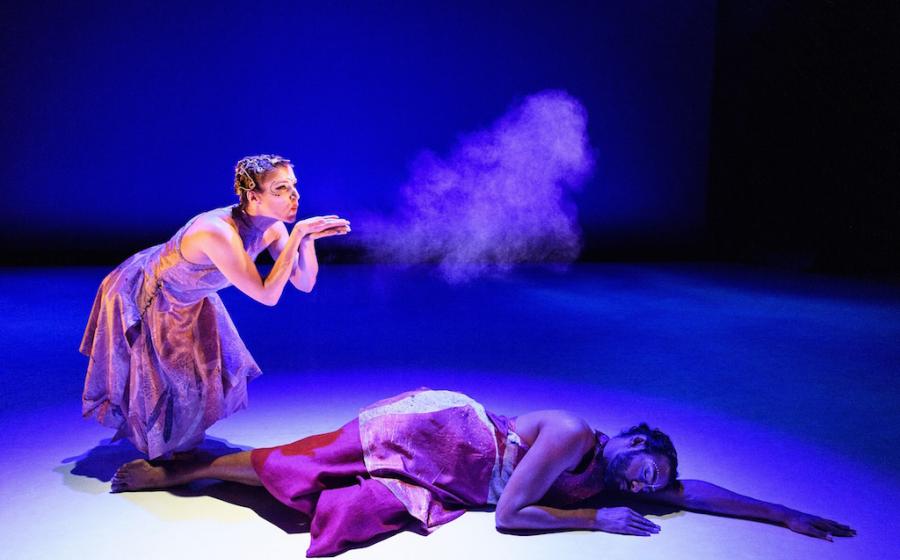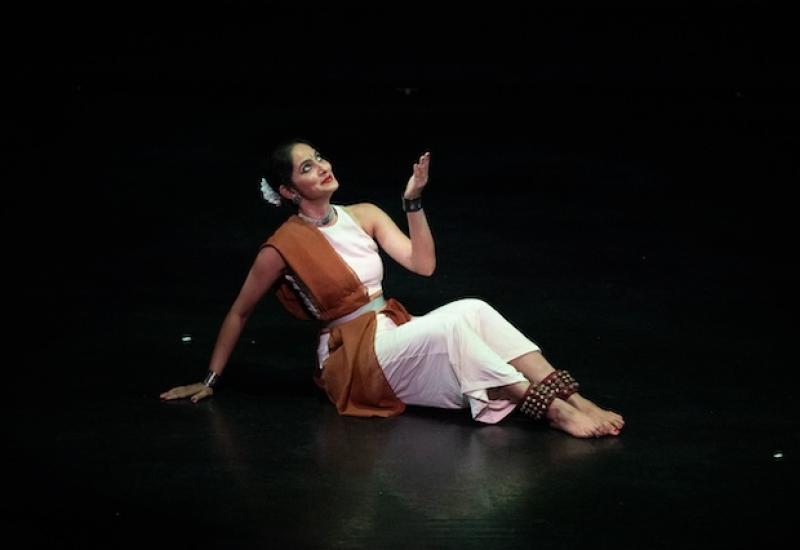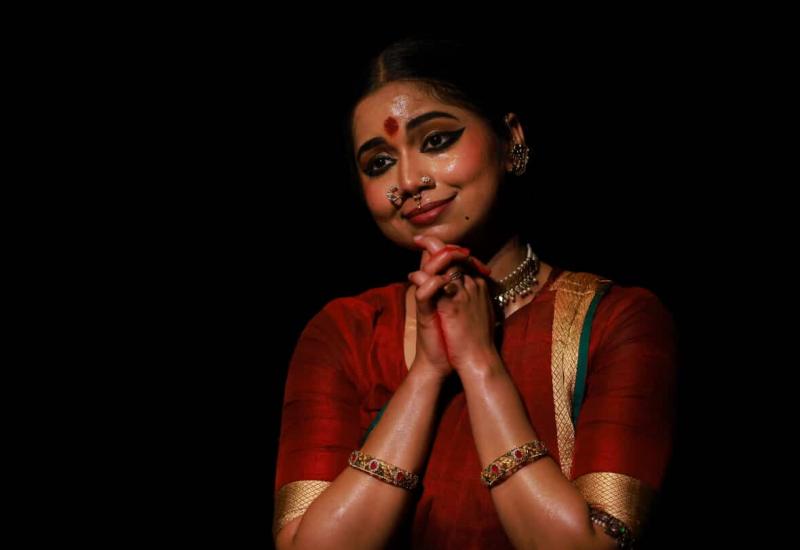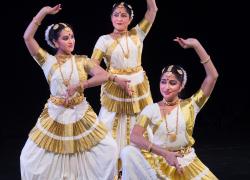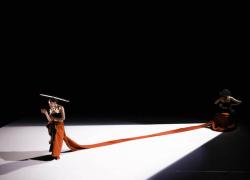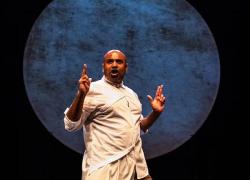Seeta Patel's The Rite of Spring
18 May 2019,
The Place, London
The Pulse Dance Audience review
The first point to make about this version is that there was no sense of a disjunction between the dance and the music. This was appreciated by members of an audience that included ballet-goers and listeners to western music as well as many who were more familiar with South Asian dance. The complex rhythms of Stravinsky’s music and bharatanatyam were seamlessly and cleverly integrated, with the expressive power of both working coherently together.
This re-imagining was a work of impact and energy. Among comments made were: ‘the thumpingly impressive and engaging piece of music carries one forward at an unrelenting pace, with great moments. The dance matches the power of the music’; ‘extraordinary in its power’; and, of the choreographer, ‘genius’.
The performers were fully committed dancers of great technical skill and command. The movement, footwork and sharp geometric line of bharatanatyam were ‘pure and beautiful’ ‘abstract and clear’.
The musicality of the dancers was praised; however, the (recorded) music was too loud – the opening flute should have been much quieter. This led to a loss of dynamic contrast. Some found that the Interlude between the first and second parts (with vocalisation by Roopa Mahadevan, also recorded), rather broke the spell. Following that, the second half became a bit static. The first half of the programme, with a strong dance element (angika bhava – expression through the body), changed to natya (dramatic enactment), which lost momentum and ultimately failed to reach a climactic ending. Some moments of lightness were needed throughout – there should have been spaces to breathe. More variation in tonal quality would have allowed more of a build into the climax
In terms of ‘meaning’ or ‘narrative’, the idea of ancient pagan ritual was expressed with great power and conviction, with a sense of adoration and awe effectively conveyed. Those familiar with the vocabulary of bharatanatyam would have recognised the ritualistic gestures connected with fire ceremonies and pouring. The clever syncretism of music, hair (neat wigs suggesting the curly hair familiar from Greek antiquity) and sumptuous costume, with the colour saturation of the lighting integral to the impact of the whole, was effective; though the blackouts were felt not to be necessary. However, although the Rite of Spring story may be familiar to western ballet audiences, this was not the case for South Asian dance audiences, and the programme notes did not offer help. The piece became a series of tableaux, conveying an ambiguous narrative, with the imagery not cohesive (and ‘there was too much of the red bundle’). Why was the protagonist chosen? Many audience members spoke of ‘not getting it’.
Although myth does not need to relate to our current condition (though it often does), it should engage the audience at some level. It felt futuristic, like a sci-fi Rite of Spring, and rather clinical. While there was much to be praised, some felt a lack of emotional engagement, the rasa was missing. This is something that can certainly be addressed.
Dance Dialogues
Dance Dialogues, choreographed by Seeta Patel, opened the evening, and the audience loved it. The danced conversation, created over a week’s residency, between young bharatanatyam and contemporary dancers, was well-balanced, cohesive and exciting. A ballet-goer commented on how the feet on the ground in bharatanatyam created a different flavour from ballet, but also how well the fusion worked. The seamless quality captured people and was an inspiring way of introducing the genres to new audiences.
Guest Music Performance
The Guest Music Performance, Bach’s Cello Suite 1, performed by Celine Lepicard between Dance Dialogues and The Rite of Spring, did not work for our audience. It was hard to see the rationale for its inclusion, and it made the evening feel rather long. It did not help that the audience clapped between the movements of the suite – again, programme notes might have helped those unfamiliar with it and it would have been less distracting for cellist and audience.

